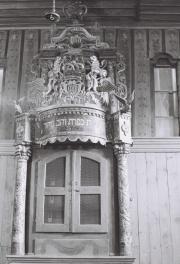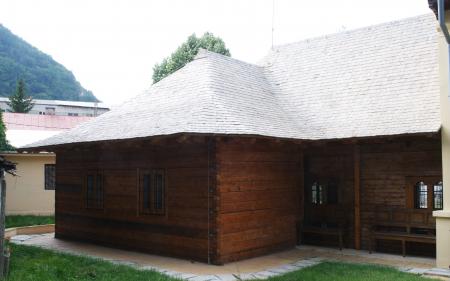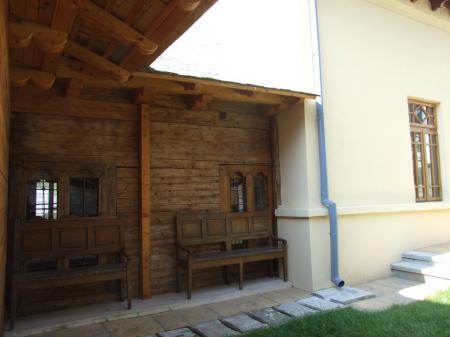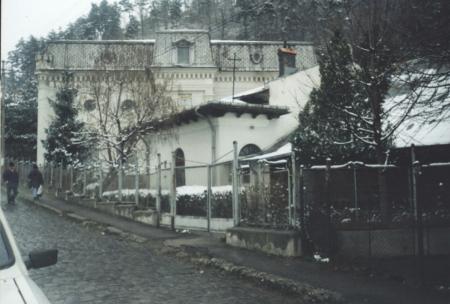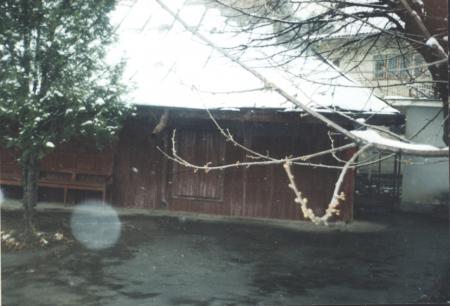Obj. ID: 3368
Jewish Architecture Old Wooden Synagogue (Besht Synagogue) in Piatra Neamț, Romania

The Old Wooden Synagogue in Piatra Neamț dates from 1766. It underwent restoration in 1826, 1854, 1870, 1928, and 2010. According to legend the Baal Shem Tov prayed here, hence it is sometimes called the "Besht Synagogue." [See: A. Streja and L. Schwarz, The Synagogue in Romania, 2nd. ed. (Bucharest: Hasefer, 2009), p. 152.]
The synagogue building consists of a rectangular prayer hall with a women's gallery on the north side. The interior floor is sunken one and a half meters below the exterior ground level. An octagonal wooden dome, typical of 18th-century wooden synagogue architecture, rises above the bimah in the center of the main prayer hall. A stone vestibule attached to the west side of the wooden building functions in winter as a smaller, warmer prayer hall.
For the main prayer hall see:
For the small prayer hall (vestibule) see:
See also:




